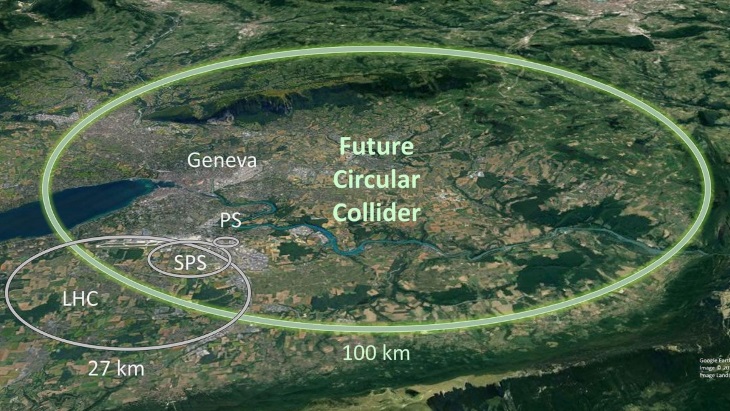The design of superconducting strands and their manufacturing technology were developed at the Bochvar Institute in Moscow, while the 50 km long qualification batch of strands was manufactured at the Chepetsky Mechanical Plant in Glazov, in Udmurt Republic. These are both TVEL subsidiaries.
CERN, which is based in Switzerland, has also produced Rutherford cables with the delivered wires, TVEL said. The tests have achieved "record-breaking results", it added, for Russian superconductivity technologies, including the critical current density in electromagnetic field, residual resistivity ratio, as well as effective diameter of the strand.
The magnet system is one of the key elements of the "collider of the future", TVEL said.
The FCC’s "tremendous dimensions" - a circumference of about 100 km - would require significant supply of superconducting strands, which can only be provided through joint efforts of the countries possessing such technology, TVEL said. At the same time, the potential future construction of the FCC, which is proposed to be in Switzerland, is a key international project of the global scientific community, TVEL said, since it would enable scientists to bring fundamental research in elementary particle physics to a new level. In particular, it will help understanding of the nature of dark matter, the antimatter-matter asymmetry in the observable Universe, and other issues beyond the framework of the so-called Standard Model of modern physics, it said.
Natalya Nikipelova, president of TVEL, said that, in addition to niobium-tin strands, the company is also developing niobium-titanium strands for the Future Collider, as well as ultrapure resonator niobium, which will be required to manufacture the collider accelerating systems.
TVEL says that applied superconductivity is one of its strategic fields of non-nuclear technology developments. In addition to fundamental science projects, low-temperature superconducting materials are indispensable for development of modern medical equipment (magnetic resonance imaging systems), as well as for analytical equipment of high and ultra-high resolution, such as nuclear magnetic resonance spectrometers. Of primary importance for superconductivity technologies is the development of high-temperature superconducting materials, which will significantly improve the performance of conventional electrical and power industry devices, TVEL said.





_69218.jpg)

_50545.jpg)
_28367.jpg)
_76087_55556.jpg)




